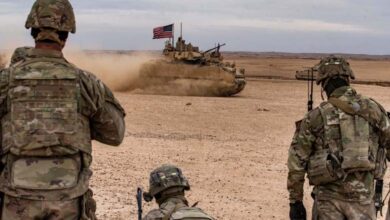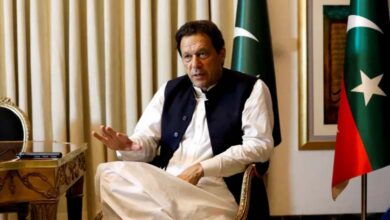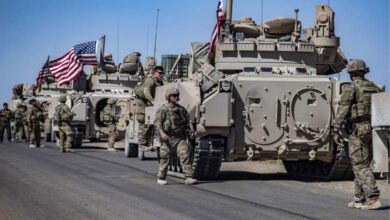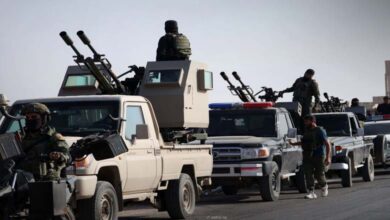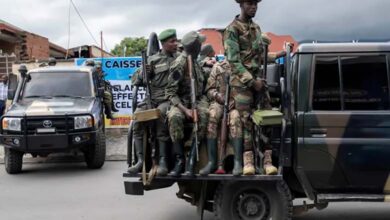One Trillion Dollars: The Cost for Europe to Break Free from Washington’s Hammer

One trillion dollars over 25 years—this is the estimated cost for Europe to end its dependence on the American war machine that has shaped transatlantic relations since 1945.
According to the International Institute for Strategic Studies (IISS), European countries would need a trillion dollars over the next quarter-century to compensate for U.S. military capabilities if Washington were to withdraw from NATO.
-
Nordic Unity: A Model for European Defense Beyond NATO
-
“Military Service”: Europe’s Concerns Drive towards “Mandatory” Service
The report states that replacing the U.S. air power would be the most expensive component, amid repeated signals from President Donald Trump’s administration about plans to scale back America’s military presence in Europe. This includes potentially relinquishing the position of Supreme Allied Commander Europe, held by the U.S. for 70 years, according to Newsweek magazine.
The report highlights the security gap and the political and financial challenges that European nations would face in the absence of U.S. military support, noting that massive investments would be required to boost Europe’s own defensive capabilities against potential threats from Russia.
-
Ukraine after the Suspension of U.S. Aid: Implications and Options
-
Why Is It Time to Reconsider the Creation of a European Army?
It forecasts that the war in Ukraine will likely end with a ceasefire by mid-2025, after which the U.S. will begin withdrawing from NATO and shifting its military focus toward the Indo-Pacific region. This would leave Europe with greater responsibility for its own security.
European NATO members would face significant challenges, especially as Russia is expected to rebuild its land forces by 2027 after a ceasefire.
Replacing American military equipment and capabilities in Europe over the next 25 years is estimated to cost around $1 trillion. This includes acquiring 400 additional aircraft across the continent (about one-fifth of the total cost), replacing 20 U.S. destroyers (15% of the budget), and offsetting the withdrawal of 128,000 American troops, at a cost exceeding $12 billion.
-
Europe’s Decisive Test: 10 Steps to Navigate without the American Captain
-
“Victory Plan”… European Criticism Disrupts Zelensky
Despite these challenges, the IISS believes that rebuilding European defense capabilities is achievable if European NATO members commit to spending 2% of their GDP on defense in 2024. This could provide an additional $62 billion for their armed forces.
However, this level of funding would require major shifts in defense spending policies, nearing Cold War-era levels when military budgets exceeded 3% of GDP.
At the same time, the U.S. has not clearly defined the scale or timing of its planned military withdrawal, leaving European allies in a state of uncertainty.
-
After America: Is it Time to Transform NATO into a European Organization?
-
Armed groups target U.S. Bases despite Biden’s warnings
A European official indicated that Washington might take up to two years to determine which capabilities to pull out of Europe. European political and military circles acknowledge a long-standing overdependence on U.S. support and have pledged to increase investment in defense industries, though the pace of implementation remains slow, with current efforts focused on replenishing stockpiles sent to Ukraine.
In the U.S., some members of Congress have voiced concern over the Pentagon’s intent to reduce overseas troop presence, warning that such a move could compromise European security.
Meanwhile, the current commander of U.S. forces in Europe has confirmed he has no plans to withdraw troops from America’s major bases on the continent.
-
Washington increases pressure on Russia by calling on European countries to arrest Putin
-
Heavy Clashes in Tripoli After the Killing of a Militia Leader Affiliated with the Presidential Council
European military powers have begun preparing plans to take over responsibility for the continent’s defense, including a formal proposal to the White House to assume leadership over the coming decade.
Nevertheless, the report warns that Europe will need five to ten years of intensive defense spending before it can match current U.S. capabilities on the continent—excluding the American nuclear arsenal, which will remain under U.S. control.
Given these circumstances, Europe faces a major strategic challenge that demands a significant increase in defense spending and structural changes to its security policies to ensure its stability in a shifting geopolitical landscape and amid declining U.S. military commitment in the region.
-
Trump Shuts Down the Office for Climate Diplomacy: What Are the Global Consequences?
-
An American Historical Solution for the Ukraine Crisis: The Post-War Berlin Model




